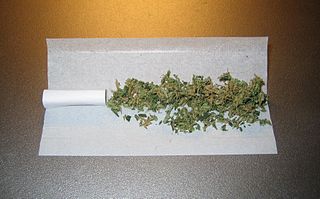Two States Find Out If the Grass Is Greener on the Legal Side

Starting in 2014, marijuana can be sold legally in Colorado and Washington.
 Unrolled Marijuana Joint Related Links |
In passing Amendment 64 in 2012, Colorado voters legalized the “personal use and regulation of marijuana," including the sale, manufacture, and commercial cultivation of cannabis. The state now regulates marijuana much in the same way it does alcohol. Washington took a similar path with Initiative 502, also passed in 2012. Initiative 502 legalized the use and sale of small amounts of marijuana for adults age 21 and over. Taxes on marijuana sales are used for healthcare and substance abuse prevention and education. Selling pot for recreational use began on Jan. 1, 2014, in both states.
Positive Impact
In May 2014, Denver's government released statistics showing that violent crimes and robberies had dropped significantly in the first four months that marijuana legalization went into effect. Compared to the first four months of 2013, homicides had decreased by 52.9%, sexual assaults by 13.6%, robbery by 4.8%, and aggravated assault by 3.7%.
So far the move has also proved to be a positive one economically. In 2010, Colorado police arrested 10,343 people for marijuana possession, which cost taxpayers $38 million for judicial, legal, and correction expenses. Figures were similar in Washington, where 8,364 people were arrested for marijuana possession in 2010, costing taxpayers nearly $35 million. Under the new law, both states projected few marijuana-related arrests for 2014, therefore, saving the taxpayers millions.
New Source of Revenue
Not only does it save money for taxpayers and the states, it provides a source of revenue. In 2013, $1.4 billion in medical marijuana was sold in the 19 U.S. states where it was legal. That figure was expected to grow by 64% in 2014, bringing in an estimated $2.34 billion.
Washington officials received 3,746 marijuana business license applications, including 867 for retail licenses. In Colorado, 348 retail marijuana licenses were issued and approved to sell up to 28 grams of pot to people aged 21 or order. Moreover, both states saw an immediate increase in tourism. Companies in Colorado began offering marijuana tours, which included some of the famous ski resorts. Cannabis supplier Telluride Bud Company had customers driving from Texas, Arizona, and Utah in early 2014.
The Bad News
The news hasn’t been all good. The first death linked to legalized marijuana in Colorado happened on March 11, 2014, when Levy Thamba, a 19-year-old student at Northwest College, fell from a balcony at a Holiday Inn. The cause of death was “multiple injuries due to a fall,“ but the Denver medical examiner’s autopsy report also stated marijuana intoxication was “a significant contributing factor.“ Thamba had consumed cookies that contained marijuana. It was the first death related to marijuana intoxication in Colorado in 2014.
According to a study released in April 2014 by scientists from Harvard Medical School, Northwestern Medicine, and Massachusetts General Hospital, the brains of young adults who casually smoke weed were affected. The study, published in the Journal of Neuroscience, showed that changes occurred in the sections of the brain associated with emotion and motivation. The study involved young people, aged 18 to 25, who were not heavy users. Half of the 40 people in the study used it on average of once a week. The other half had only used it five times in their lifetime and not at all in the past year.
This study comes at a time when support for the legalization of marijuana is growing in the United States. In fact, a number of states are following in the footsteps of Colorado and Washington by considering similar legislation and allowing voters to have their say in upcoming elections. However, the authors of this latest study urge caution and say that “further study of marijuana effects are needed to help inform discussion about the legalization of marijuana."
More States Follow
In the Nov. 2014 midterm elections, voters in Oregon, Alaska, and Washington, D.C. had a chance to vote on marijuana legalization ballot measures similar to those that passed in Colorado and Washington. In all three, voters approved them. Oregon's law, which passed with 54%, planned to create a commercial regulatory system for the distribution and sale of marijuana, like Washington and Colorado did. Alaska's new law was also similar.
The measure in Washington D.C. passed with nearly 65% of the vote. That new measure would allow anyone age 21 and over to possess up to two ounces of marijuana for personal use and grow no more than six cannabis plants in their home. However, not every state voted in favor of marijuana. Florida voters decided against a measure to legalize the use of medical marijuana in their state. With so many states considering and voting on marijuana, debate on the issue would continue in the years and elections to come.
Source: The Journal of Neuroscience, National Organization for the Reform of Marijuana Laws, Medical Marijuana Industry Group, The Free Thought Project, DenverGov.Org
by Jennie Wood







